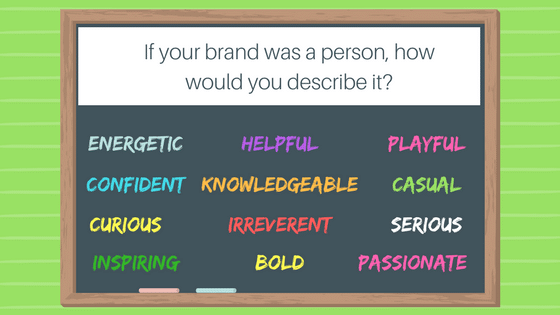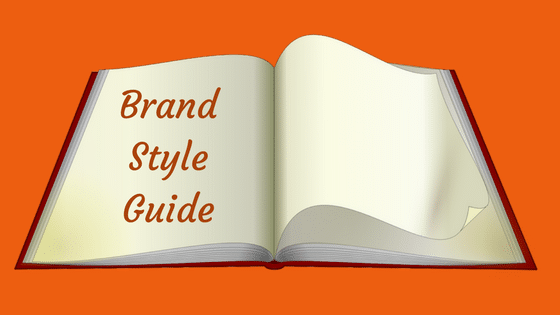It is time to create a brand communications style guide for your company? When you want to create a strong brand identity, build trust with your customers and make sure your brand is instantly recognisable, consistency is the key.
This is easy enough to achieve if you’re a one-person operation doing your own website copywriting and blog writing, but when you have both internal and external writers or content marketing services working on projects for your company, a brand communications or organisational style guide can become essential.
An emerging issue with communications consistency, is the availability of generative AI tools. This can lead to a broader range of people within an organisation creating documents or drafting content. If you don’t have a policy on the usage of generative AI or a style guide, now would be a good time to create them!
A style guide lays out a clear framework for your communications, from the layout and font to the style and tone of the language used. It can help you maintain a sense of consistency in your visual and written communications. A clear set of guidelines also makes it much easier for your writers and designers to do their job properly, resulting in better quality content, more recognisable brand values and a uniform message across different platforms.
A style guide is not the same thing as a content strategy.
7 things every brand communications style guide needs
The idea behind a style guide is that it is as concise as possible – the easier it is to use, the more likely your team will refer to it rather than guesstimate what to do.
While the details will vary depending on your brand, your style guide should include the following seven things as a minimum:
- Introduction: Always start with a clear introduction explaining the purpose of your style guide. Have headings for each section and include a contents page so people can find things quickly.
- Basic overview of writing guidelines: It might sound like a no-brainer but you’ll need to specify the basics like whether you’re using American or English spelling, the level of formality required and where you stand on using slang when addressing your customers. Where possible, include examples of the kind of language you want for your brand. If you have a generative AI use policy, draw readers’ attention to it here.
- Your brand message, values and promise: To create clear, relevant communication on behalf of your brand, your team will need to understand your brand’s values, message, point of difference and overall positioning in your market. This includes your brand promise – what you are giving your clients or customers. Your brand promise should be upheld in all areas of your communication to establish trust.
- Brand personality: To engage your customers your brand needs to have a personality. This doesn’t mean cracking jokes every couple of sentences – many brand personalities are serious and matter of fact. Other brands are light-hearted or irreverent. Whatever your brand personality, it needs to be consistent or you will confuse your customers and clients. Make it clear in your communications style guide, and include examples.

- Dos and don’ts: Do you have words you just hate? Do you want to banish industry jargon from your communications? A handy list of dos and don’ts can be helpful for writers and can also help you avoid legal issues.
- Formatting guidelines: Consistent formatting is essential for your overall brand image so you’ll need to include some guidelines detailing your preferences for lists, quotes and bullet points. Think about capitalisations, italics and underlines – they might seem like minor details but they make a surprising difference to your overall brand image.
- Visual guidelines: Visual identity is just as important as the written word. Include detailed information about how to display your communication materials, whether it’s print brochures, website content or social media posts. Think about your brand colours, how your logo is to be used, the fonts you use in your communications and the types of images you want your team to use when creating content.
If use of AI tools is permissable in your organisation, consider including specific instructions to help readers achieve a draft that’s as close to brand style as possible – this might be a series of prompts they can use, or a sample they can paste into the platform to provide a style example.
Style guide examples by organisational type
Different types of organisations will have special factors to consider when creating a communications brand a style guide. Here are a few suggestions that might help you ensure you create a guide that works for your organisation.
Small business: Many small businesses focus on personal, friendly communication with customers and can often get away with less formality than bigger organisations. Consistency is important to create a strong brand identity and your communications style guide should focus on the tone of voice and visual presentation. Here’s an example of a small business style guide from Derivan, which has a strong focus on visual presentation.
Corporate: Your brand is probably already well established but you’ll need to stay consistent to maintain it and ensure you stay on message. If you have a large team working on your communications, accessibility is crucial for your style guide. Check out this corporate style guide from Mailchimp for some inspiration.
Tertiary Institution: If you’re creating communications style guide for an educational institution you’ll need to ensure you’re on message when you’re communicating with different audiences. The way you approach potential students will probably be different from the style you use to communicate with other institutions. Your style guide should include instructions on using the appropriate tone of voice for different situations. Here’s an example of a tertiary institution style guide from Australian National University.
Government: As a government organisation, you’ll have to abide by certain guidelines in how you communicate to ensure you’re as inclusive as possible. Your content producers will probably also have processes they need to follow, which should be made clear in the style guide. Take a look at this style guide from the UK Government to see what we mean.
Not-for-Profit: As a not-for-profit, you often have to manage communications with a number of different stakeholders. Your style guide should cover the different types of people you communicate with to ensure you’re presenting a consistent image that’s in line with your organisational priorities. Here’s an example of the Canadian Cancer Society’s style guide.
How to create a brand style guide

Some organisations create a simple document and circulate it to their team, but there are alternatives that can make your brand communications style guide more accessible for everyone.
Platforms like Frontify allow you to create a fully formatted, searchable and great looking style guide quickly and easily. With an online style guide you can give anyone access to the URL, and they’ll have all the information they need at their fingertips.
The right platform for you will depend on your organisation’s size, needs and how many people are working in your team.
Whatever the size of your business, a comprehensive brand communications style guide can help your brand create a consistent presence across all channels, and build a strong identity. When you have developed your guide, don’t forget to share it with your copywriting service – ensuring your writers are aware of the requirements will help you avoid unnecessary revisions.
Leonie Seysan is the Director of Article Writers Australia, and manages the team of professional writers and editors. She holds a Bachelor of Communications Degree (Media Studies) and has been writing professionally for over 15 years. Leonie is also the podcast host of "Content with Humans" and author of "Turning Insight to Influence: A Guide to Building a Thought Leadership Program".






